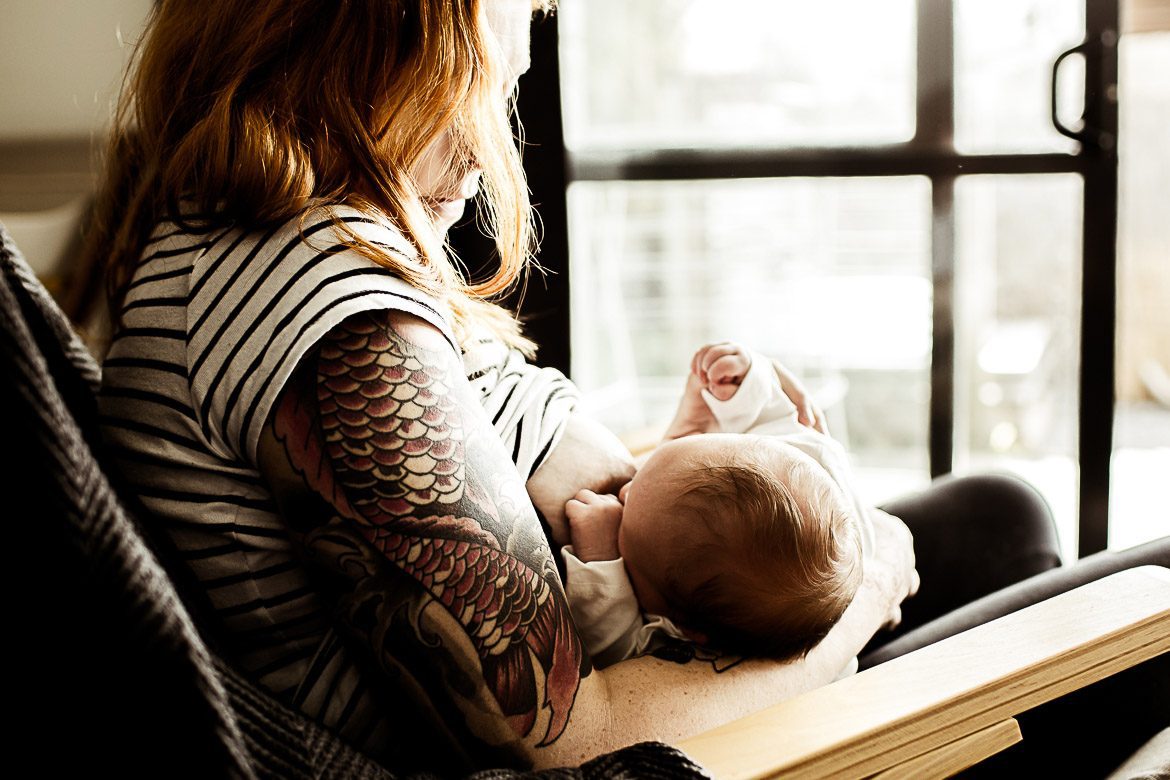By Nancy Mohrbacher, IBCLC
Nursing mothers are commonly warned: “Don’t let your baby use your breast as a pacifier.” Although often said, this is an incredibly curious statement. After all, which came first, the breast or the pacifier? The breast, of course, long predates the pacifier (aka “dummy”), a man-made device designed late in human history to soothe babies as a breast substitute.
If the pacifier is indeed a breast substitute, then what on earth could it possibly mean to let your baby “use your breast as a pacifier?”
What Is the Real Message?
The assumption underlying this advice is that baby’s desire for the breast is unreasonable. After all, if the baby’s need for milk was legitimate, the pacifier would never do. By definition, no milk flows from a pacifier. The point seems to be that if the baby nursed “long enough” (and the number of acceptable minutes varies by adviser), the baby no longer needs milk, so sucking on a pacifier should be good enough. However, as explained in THIS POST, some babies are fast feeders and others are slow feeders. The number of minutes a baby nurses tells us nothing about the volume of milk consumed.
Do babies sometimes breastfeed without taking milk? It does happen. Every so often you may notice your baby softly mouthing your breast while mostly asleep. In this case, your baby may indeed be sucking but not drinking. Is this what those who say “don’t let your baby use your breast as a pacifier” are referring to?
I don’t think so. This advice usually follows a weary mother’s report of a marathon nursing session, a common occurrence in the early weeks. “Cluster nursing”, or bunching feedings close together during part of the day, is a fast-growing baby’s way of boosting milk production when needed. This works because “drained breasts make milk faster”.
However, if a mother regularly substitutes a pacifier for her breast at these times, this can short-circuit her baby’s efforts to increase her milk. That’s why the American Academy of Pediatrics (AAP) recommends babies be breastfed on cue (see the 2012 AAP policy statement HERE). The AAP encourages parents to feed their babies whenever they show feeding cues (increased activity, rooting, mouthing), no matter how often these cues appear.
Babies’ feeding cues are never unreasonable, according to the AAP. In fact, during the first month, while milk supply is being established, the AAP specifically recommends avoiding pacifier use precisely because too-frequent use of this “breast substitute” can undermine the establishment of a healthy milk supply.
Babies’ feeding cues are never unreasonable, according to the AAP. In fact, during the first month, while milk supply is being established, the AAP specifically recommends avoiding pacifier use precisely because too-frequent use of this “breast substitute” can undermine the establishment of a healthy milk supply.
Can Your Baby Be Trusted?
But there’s another aspect to this “don’t let your baby use your breast as a pacifier” advice that is positively insidious. The idea that a mother must be careful not to let her baby “use her” has the potential to undermine her trust in her baby, driving a wedge between them and preventing them from getting in sync the way nature intended. This curious warning is the not-too-distant cousin of the indefensible Western myth that newborns can “manipulate” their parents, even before they have the mental ability to do so.
As a case in point, a mother recently said to me at a mother-support meeting that her baby girl didn’t really need to nurse whenever she showed feeding cues because she was mostly doing “non-nutritive sucking”. This mother had been struggling with her baby’s slow weight gain and had recently started nursing more often instead of sticking to the feeding schedule she had first adopted. Because this baby was breastfeeding more, her weight gain had improved.
See next page for more…











